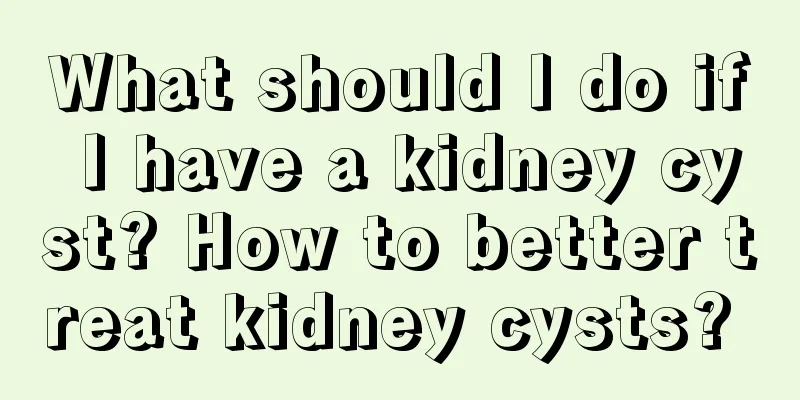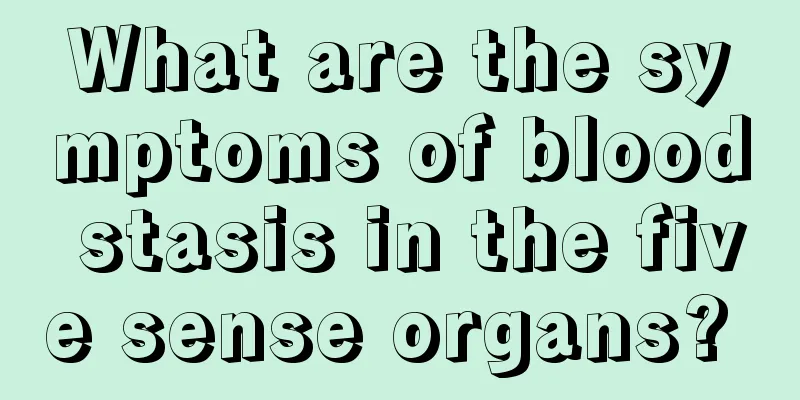What should I do if I have a kidney cyst? How to better treat kidney cysts?

|
The kidney is the most important organ in the human body. It is the organ that discharges waste from the human body every day. If there is a disease in the human kidney, it will seriously affect the health of the human body. Renal cyst is a very common kidney disease. Having a kidney cyst will bring many complications to the body and will also affect normal life. So how can we better treat kidney cysts? Renal cyst is the most common structural abnormality of the kidney in adults. It can be unilateral or bilateral, one or more, and is generally about 2 cm in diameter. There are also cysts with a diameter of up to 10 cm. It is more common in men. The incidence rate increases with age. Simple renal cysts generally have no symptoms. Only when the cyst compression causes vascular occlusion or urinary tract obstruction may corresponding symptoms appear, which may affect renal function. When the cyst is larger than 5 cm, appropriate treatment should be given Including cyst fluid aspiration and intracystic injection of sclerosing agent or surgical treatment. Among the renal cysts we commonly see, most are simple renal cysts, while hereditary renal cystic diseases account for a relatively small proportion. Simple renal cysts are almost non-existent in people under 20 years of age. If cysts occur in individuals under 20 years of age, congenital kidney development problems or hereditary renal cystic diseases should be highly suspected. The incidence of renal cysts increases with age. The incidence of simple renal cysts is about 10% between the ages of 30 and 40. By the age of 80, the incidence of simple renal cysts reaches more than 50%. Simple renal cysts are more common in men. Clinical manifestations Simple renal cysts generally have no symptoms, but corresponding symptoms may occur when the cyst compression causes vascular occlusion or urinary tract obstruction. This disease is often discovered during urinary tract imaging examinations due to other diseases. In recent years, more and more health examinations have included abdominal B-type ultrasound examinations, and the detection rate of simple renal cysts has increased. It was originally believed that simple cysts did not affect renal function. However, image analysis of renal CT examinations showed that after correction for age, gender, primary kidney disease, etc., patients with renal cysts had higher blood creatinine levels than those without renal cysts, and the more cysts there were, the higher the blood creatinine level. This result suggests that simple renal cysts may affect renal function. diagnosis The diagnosis of simple renal cysts mainly relies on imaging examinations. Differential Diagnosis The presence of cysts in the renal parenchyma needs to be differentiated from the following diseases: necrosis and liquefaction of solid renal tumors; canceration on the basis of renal cysts, which is extremely rare; and autosomal dominant polycystic kidney disease. |
>>: How to treat kidney cysts? Pay attention to these matters when having kidney cysts
Recommend
How many types of yam are there
There are various types of yams, the most common ...
There is a dull pain in the left side of my chest
Since many situations can cause chest pain, when ...
How to treat gastritis with bile reflux?
Modern life is stressful and busy. People must al...
Brief introduction to the symptoms of testicular cancer at different stages
In today's society, everyone is afraid of can...
What are the early symptoms of female lymphoma? Early pictures of lymphoma
We all suffer from many diseases, but many diseas...
How much water should I drink a day for brain cancer
How to prevent brain cancer is a century-old prob...
How is kidney stones treated with TCM?
Kidney stones are a common urinary system disease...
Can drinking salt water in the morning help eliminate stool?
Daily health care should start in the morning. Th...
What are the differences between prostate cancer and bladder cancer? Teach you to distinguish the two cancers from the symptoms
Prostate cancer and bladder cancer are particular...
Nursing care for patients after endometrial cancer surgery
The psychological care of patients with endometri...
Can lymphoma be contagious through eating?
Is lymphoma contagious through eating? Friends an...
What happens when you have your period
There are many taboos when having menstruation. M...
Back pain, leg cramps
Modern people are flowers in a greenhouse, especi...
What are the functions and effects of tocopherol
We need to pay special attention to the things us...
What is the most reasonable way to take off contact lenses
Wearing contact lenses is quite troublesome, espe...









